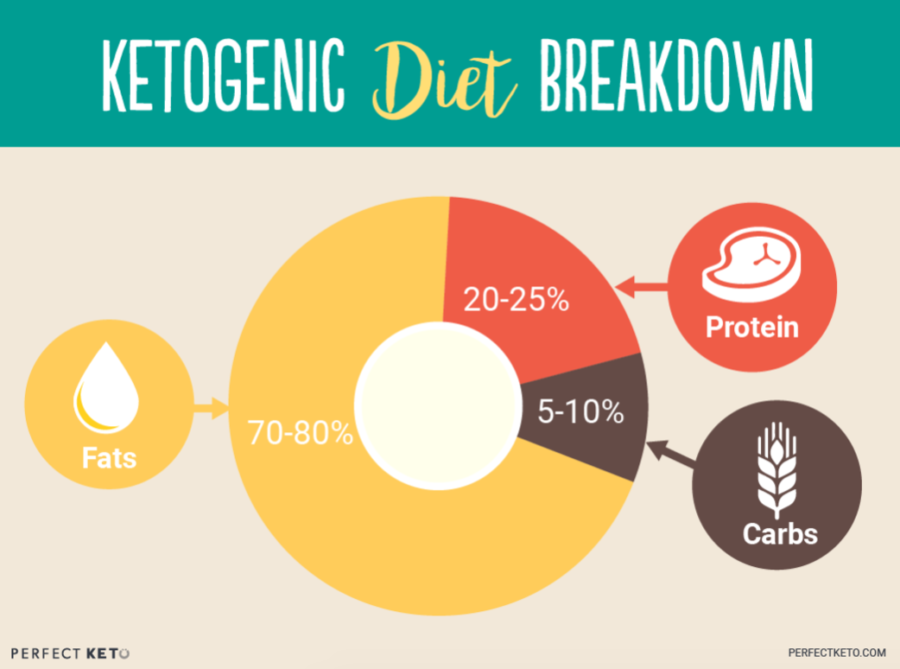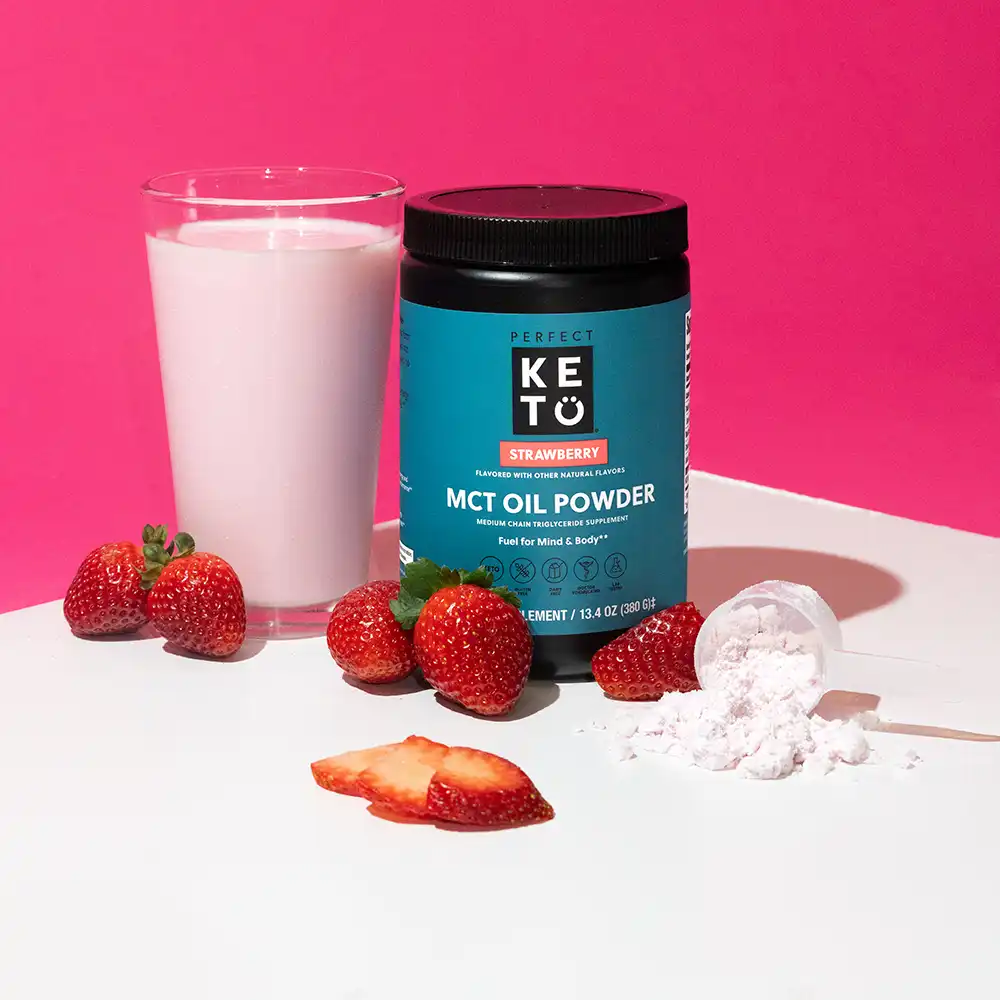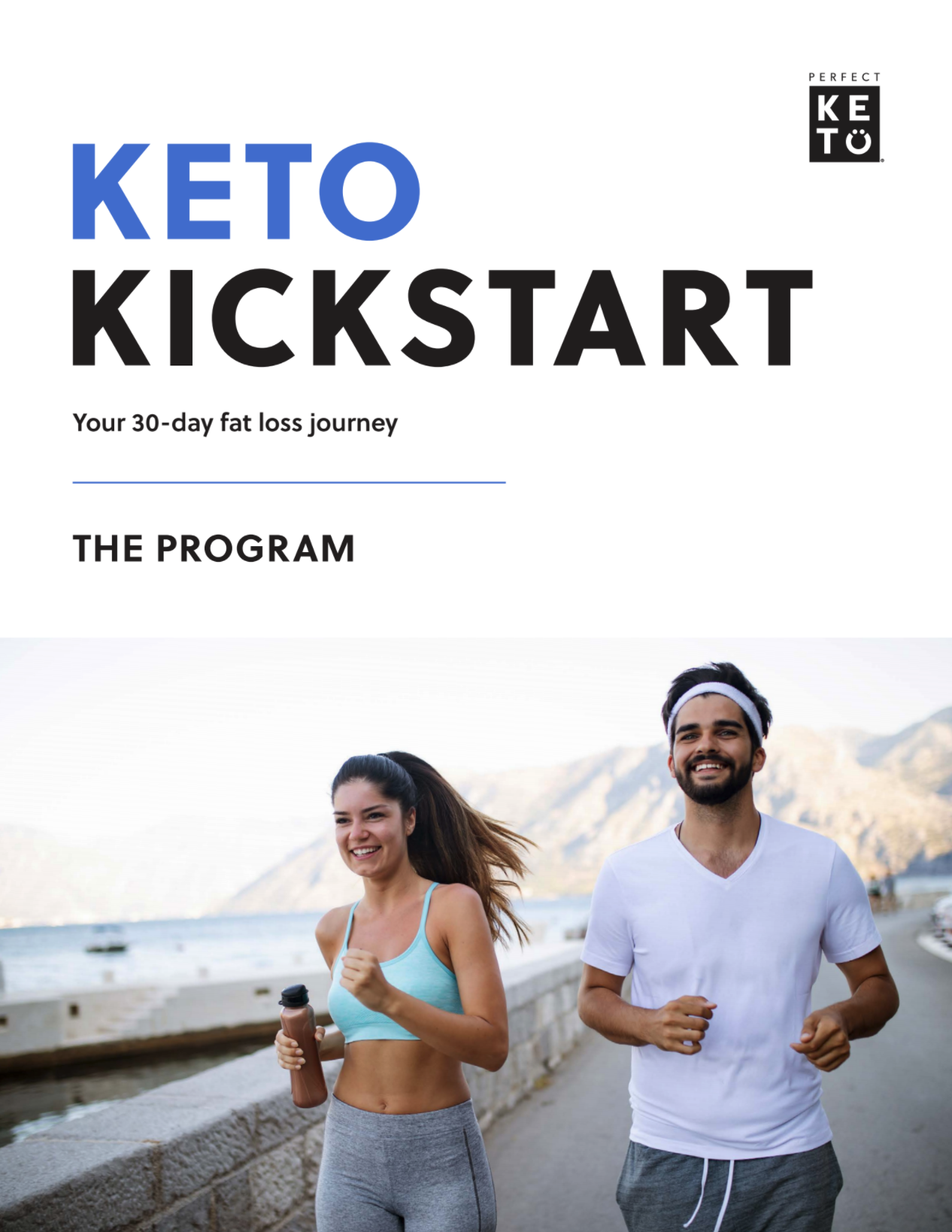As people learn about the health benefits of a high-fat, low-carbohydrate diet, the once popular low-fat diet fads are losing popularity. And yet, many of those following a keto diet menu underestimate how much fat they need to enter a ketogenic state.
So, just how much fat should you eat on a keto diet?
This article will cover why fat intake matters on the ketogenic diet, how to calculate your individual macro goals, and how to build your own keto diet menu. With plenty of delicious keto recipes in store, you’re sure to hit your weight loss and other health goals in no time.
The Importance of Fat on the Keto Diet
Dietary fat is the cornerstone of the ketogenic diet. The goal of the keto diet is to restrict your carb intake while loading up on healthy fats, thereby allowing your body to enter a fat-burning state called ketosis.
Here’s how the keto diet works: When given the choice, your body will always choose to burn glucose (from carbs and sugar) for energy. However, when you follow a low-carb diet like keto, you deplete your body of stored glucose (glycogen).
Once your glycogen stores are used up, your body starts burning body fat instead. Your fat stores are transformed into ketone bodies in the liver, thereby raising your blood ketone levels and putting you in a ketogenic state[*].
How Much Fat Is Enough on a High-Fat Diet?
Studies show that eating a high-fat, low-carb diet like keto can help reduce your risk of heart disease, jumpstart weight loss, and reduce inflammation[*][*][*]. But just how much fat is “enough” on keto?
One of the biggest mistakes people make when starting the keto diet is not getting enough fat. The keto diet is different than other low-carb diets (like Atkins or the Mediterranean diet, for example) in that keto is not a high-protein diet. It is, however, extremely high in fats, and you need fat to get enough calories to avoid any metabolic or thyroid problems that are associated with low-calorie intake.
On keto here’s what your macronutrients will look like: Roughly 5-10% of your daily calories should come from carbohydrates, 20-25% of your calories should come from protein, and the remaining calories — 70-80% of your daily intake — should come from fat.

Customizing Your Personal Macro Goals on Keto
Although these percentages offer a good guideline, they really don’t do much good until you know how they fit into your specific needs. By using the Perfect Keto macro calculator, you can adjust your macro guidelines to account for your age, body weight, BMI, and physical activity level.
You’ll need to find out how many grams of fat this comes out to for you by using an online calculator (such as MyFitnessPal) to calculate your daily caloric intake. Then, you can input these percentages to find out the amount of carb, protein, and fat grams you need. You’ll get a baseline amount of fat grams per day.
For example, for someone who consumes 2,000 calories a day, a fat intake of 70-80% would be around 144-177 grams of fat each day. If your caloric needs are greater, you might need more than that. You will probably consume between 30-50 grams of carbs per day.
What to Eat on a Low-Carb, High-Fat Diet
On a keto meal plan, you’ll build your plate with whole foods, including plenty of healthy fats, a moderate amount of protein, and low-carb vegetables. Consider adding these keto-friendly foods to your keto meal plan:
- Eggs and egg yolks (preferably pasture-raised)
- Healthy fats and oils like coconut oil, olive oil, and avocado oil
- Rapidly available fat from MCT oil
- Nuts and seeds including macadamia nuts, pecans, chia seeds, flax seeds, almonds, almond butter, and Perfect Keto Nut Butter (far preferable to peanut butter)
- Fatty fish including salmon, scallops, lobster, oysters, clams, and other seafood
- Low-sugar fruits including avocados and fresh raspberries, blueberries, and other berries
- Animal fats including lard, bacon fat, butter, and ghee
- Full-fat, organic (and preferably grass-fed) dairy including blue cheese, cheddar cheese, heavy cream, yogurt, kefir, and cream cheese
- Grass-fed meat including pork chops, ground beef, goat, chicken, turkey, bacon, steak, organ meats, and lamb
- Green, leafy veggies including kale, arugula, bok choy, alfalfa sprouts, and spinach
- Other low-carb vegetables including bell peppers, cauliflower, broccoli, tomatoes, cabbage, zucchini, and Brussels sprouts
Elevate Your Keto Diet

Perfect Keto MCT Powder – Sustained Energy, Enhanced Focus, Quick Metabolic Support. Unleash Your Potential.
What to Avoid Eating on Keto
When following keto, you’ll want to eliminate starchy vegetables, processed foods, and high-carb or high-sugar products. With that in mind, strike the following items from your shopping list:
- Starchy vegetables including white potatoes, carrots, corn, and sweet potatoes
- All grains (even whole grains) including rice, wheat, cereals, bread, and tortillas
- Legumes, black beans, lentils, and soybeans
- Condiments with added sugar such as ketchup, salad dressings, mayonnaise, and BBQ sauce (try this recipe for keto-friendly ketchup)
- Desserts containing sugar and sweeteners (here are a 35 low-carb sweets to replace your favorite desserts)
- Vegetable oils including canola oil, corn oil, and soybean oil
- Artificial sweeteners and sugar alcohols
A Sample One-Day Keto Diet Menu
Looking to build your own keto diet plan? No worries. Once you start browsing through recipes, you’re sure to find alternatives to some of your favorite meals (with fewer carbs, of course). For starters, try these recipes for breakfast, lunch, and dinner:
- Breakfast: Denver omelet with ham, green peppers, onions, and cheddar cheese
- Lunch: Zesty chili lime keto tuna salad
- Dinner: Simple keto meatballs and creamed spinach
- Dessert: Easiest keto lava cake
- Snack: Keto “roll-ups” made with cream cheese and salami
Track Your Ketones and Fat Intake to Ensure You’re in Ketosis
To ensure you’re in ketosis, you should track your fat, protein, and carb intake daily. However, there’s a more accurate way to know whether your body has transitioned to a fat-burning state: testing your ketone levels.
You can test your ketone levels on your breath, in your urine, or in your blood. The best indicator of ketosis is the amount of ketones in your blood.
With that said, urine testing is an easy, affordable testing method you can use at home (although not as reliable as blood ketone testing). Use Perfect Keto ketone testing strips to test ketone levels in your urine.
How to Build Your Keto Diet Meal Plan
The goal of keto is to transition your body into the fat-burning metabolic state known as ketosis. To do this, you’ll eat plenty of healthy, whole, high-fat foods while keeping your carb intake to an absolute minimum.
On a keto meal plan, your food groups will include low-carb vegetables, low-sugar fruits, and meat and seafood with a higher fat content, plus plenty of other sources of healthy fats (such as avocado and coconut oil). You’ll limit your intake of sugar, starchy vegetables, and processed foods.
If you’re looking for a complete meal plan and keto diet menu ideas, there are plenty for you to use on this site. This includes a 7-day keto meal plan for weight loss and a 3-day keto plan to help you enter ketosis. You can also use this keto meal prep guide to make cooking, shopping, and meal planning on keto a breeze.
